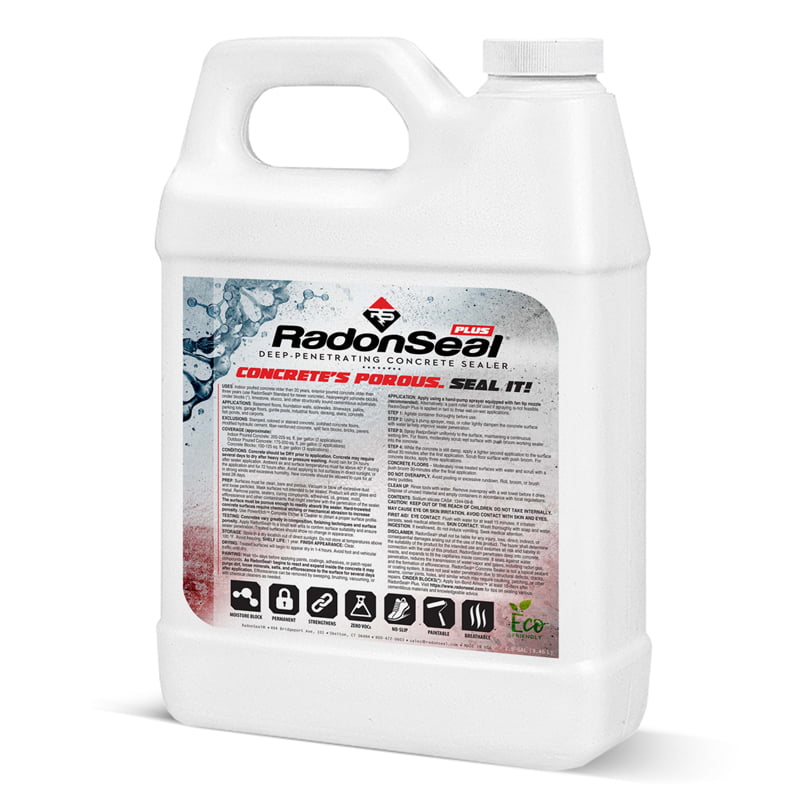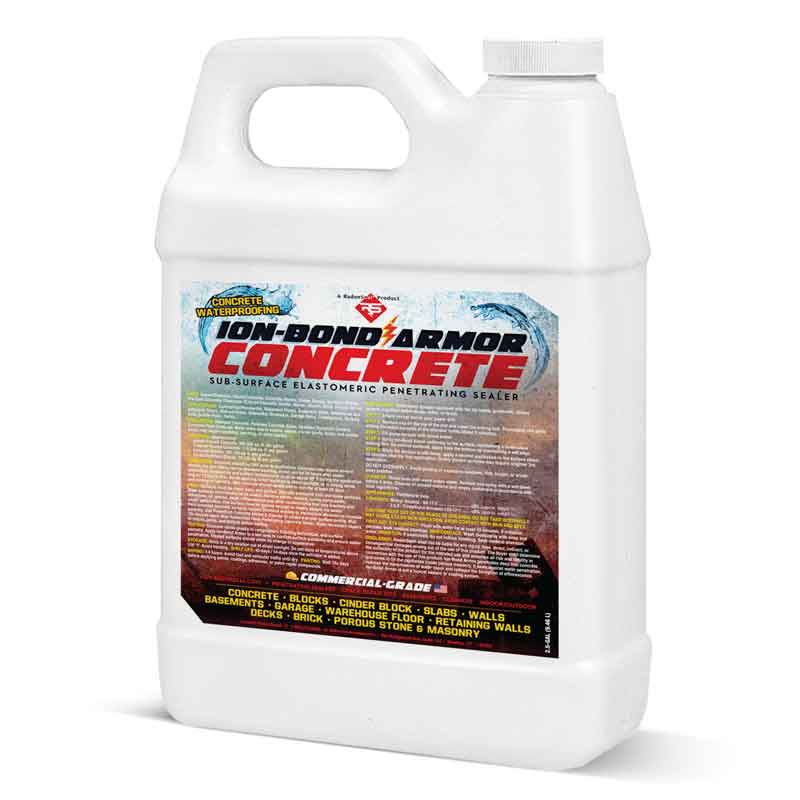
How to Waterproof Concrete Retaining Walls with RadonSeal Plus
When it comes to protecting retaining walls, whether poured concrete or concrete blocks, against negative side water pressure, moisture intrusion, dampness, and efflorescence, the ideal solution is to waterproof the backside of the wall using a proper foundation coating. However, excavation is costly and labor-intensive, coatings are temporary and often impractical, especially for existing outdoor retaining walls or those shared by neighboring properties.
If excavation is not practical, sealing the positive side (the exposed interior or exterior surface) with RadonSeal Plus Deep-Penetrating Concrete Sealer provides a highly effective alternative for minimizing moisture intrusion. As a deep-penetrating concrete sealer, RadonSeal Plus penetrates into the concrete to block pores, capillaries, and micro-cracks, forming a breathable yet durable internal barrier against water transmission. This subsurface protection becomes the first line of defense against water seepage, dampness, and efflorescence.
Why Retaining Walls Need Protection
Retaining walls, whether in residential or commercial settings, are constantly exposed to water pressure from the soil behind them. Over time, water seeps through the wall, particularly through porous areas or weak spots like cracks and mortar joints, causing:
- Dampness and moisture on the wall surface
- Efflorescence (white, powdery salt deposits)
- Peeling paint, cracked stucco, or failed coatings
- Structural degradation over time
Without sealing, these issues will worsen over time, especially in concrete block and cinder block retaining walls, which are significantly more porous than poured concrete and allow faster moisture transmission.
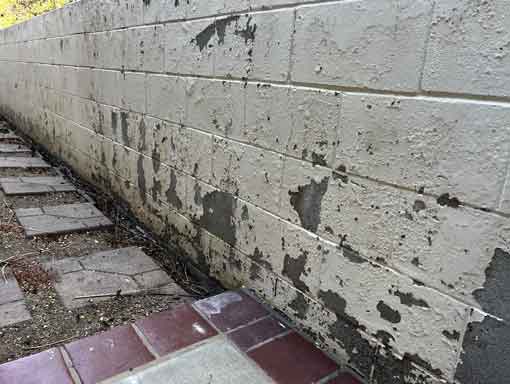
Peeling paint on a concrete retaining wall caused by water infiltration and trapped moisture behind the surface.
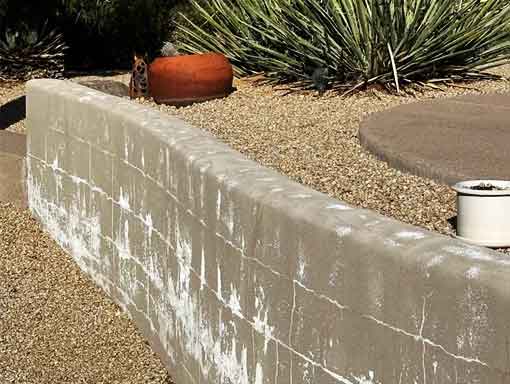
Efflorescence stains purging from a concrete retaining wall, a result of water infiltration drawing salts to the surface.
Sealing the Wall with RadonSeal Plus
RadonSeal Plus is a penetrating concrete sealer designed to waterproof from inside the wall. It penetrates up to 4 inches deep and chemically reacts with free lime and alkalis, expanding to form a hard, insoluble mineral that fills the internal pores and hairline cracks. Unlike surface coatings, it won’t peel or wear away.
Key Benefits:
- Reduces moisture vapor transmission
- Helps prevent efflorescence and dampness
- Increases adhesion and durability of paints, stucco, and coatings
- Safe for use on exterior and interior retaining walls
- Works on both poured concrete and concrete block walls
- Breathable – won’t trap water like film-forming sealers
For best results, RadonSeal Plus must be applied to a bare, clean, and dry wall surface to ensure maximum penetration into the concrete. For step-by-step guidance, please refer to the application instructions (PDF).
The Limitations of Using Paint Alone
Property owners often rely on concrete paints or masonry skim coatings in an effort to control water infiltration and enhance the appearance of retaining walls. However, these solutions are typically short-lived. When moisture and efflorescence migrate through the wall from the soil-facing side, particularly under conditions of excessive ground saturation, the pressure exerted on the surface coating can lead to premature failure. Common signs include flaking, bubbling, and peeling of the paint.
This degradation is primarily caused by capillary water seepage, which transports soluble salts (efflorescence) from within the concrete to the surface. As these salts migrate outward, they compromise the bond between the paint and the concrete substrate, leading to the eventual lifting, flaking, and failure of the coating.
To avoid such issues, it is advisable to first seal the retaining wall with RadonSeal Plus. RadonSeal fills the capillaries and micro-fractures within the concrete, significantly reducing water transmission. In doing so, RadonSeal helps control the internal moisture movement that contributes to efflorescence, while also improving the durability and adhesion of subsequent surface coatings.
When painting is necessary, whether for aesthetic purposes or added protection, applying RadonSeal Plus beforehand establishes a more stable and dry substrate. This foundational step enhances the long-term performance of the paint and helps maintain the wall’s structural integrity and appearance.
RadonSeal Plus Concrete Sealer
Buy Direct
Get It on Amazon
Addressing Concrete Cracks First
If your poured concrete retaining wall has visible settling cracks, cold joints, or deteriorated form ties that could allow water to penetrate, these areas should be repaired before applying a sealer. Use RadonSeal’s Foundation Crack Repair Kits to permanently seal cracks in poured concrete walls using low-pressure polyurethane or epoxy injection. Once these paths of least resistance have been repaired, follow up by sealing the wall with RadonSeal Plus to internally densify, strengthen, and waterproof the concrete.
For concrete block retaining walls, be sure to repair any cracks in the mortar joints as well as cracks in the blocks themselves before sealing. Type S mortar is commonly used for patching and repointing mortar joints. Alternatively, consider using an epoxy such as our ElastiPoxy Joint & Crack Filler Kit, which is ideal for filling non-moving cracks in concrete and masonry.
Once all cracks and potential paths of least resistance have been properly repaired, seal the wall with RadonSeal Plus to internally densify, strengthen, and waterproof the concrete or concrete block from within.
Concrete Block Retaining Walls: Add Ion-Bond Armor
Because concrete blocks are much more porous than poured concrete, they often will need additional protection. After applying RadonSeal Plus, use Ion-Bond Armor Subsurface Concrete Sealer as a secondary sealer. It further plugs the pores and capillaries of concrete, forming a tighter seal and enhancing water repellency on the surface. This two-step system is especially valuable for:
- Concrete block retaining walls
- Cinder block walls
- Split-face block walls
- Lightweight block walls
The combination of RadonSeal Plus and Ion-Bond Armor is one of the most effective ways to waterproof concrete and CMU retaining walls from the positive side, without the need for costly excavation.
Ion-Bond Armor Concrete Sealer
Buy Direct
Get It on Amazon
Key Summary
While nothing compares to waterproofing a wall from the negative side (the soil-facing side), sealing the exposed interior or above-grade side with a professional-grade penetrating sealer like RadonSeal Plus is the next best solution. It helps protect against moisture intrusion, efflorescence, and long-term water damage, preserving the structural integrity and appearance of your retaining wall, whether it’s for a residential or commercial property.
It’s important to understand that water intrusion issues can vary significantly depending on soil conditions, drainage, wall construction, and climate. In the most severe cases, the only surefire solution may be excavating and waterproofing the wall from the outside. However, for the vast majority of homeowners, applying a quality penetrating sealer like RadonSeal Plus offers remarkable results in mitigating water problems, often saving thousands of dollars compared to exterior excavation.
If you’re looking for the best concrete sealer for retaining walls, RadonSeal Plus, especially when paired with Ion-Bond Armor for block walls, provides long-lasting, invisible, and breathable protection for outdoor retaining walls, foundation walls, basement walls, and more.
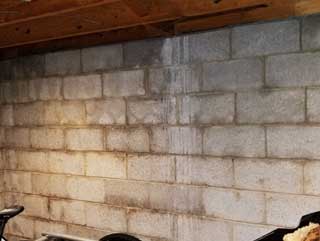
Basement Cinder Blocks
Discover the proper method for sealing basement cinder block walls from the inside to ensure long-lasting moisture protection.
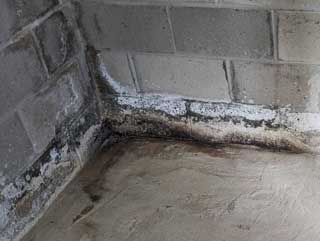
About Efflorescence
Efflorescence forms when water brings salts to the surface of concrete or masonry, leaving white stains. Learn the causes, how to remove it, and ways to prevent it.
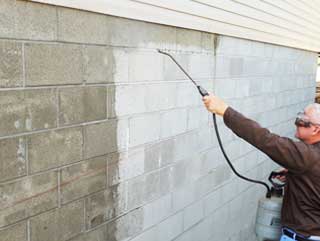
More About Ion-Bond
Learn more about how Ion-Bond Armor Concrete Sealer effectively seals commercial concrete, cinder blocks, and slabs with high vapor transmission rates.
